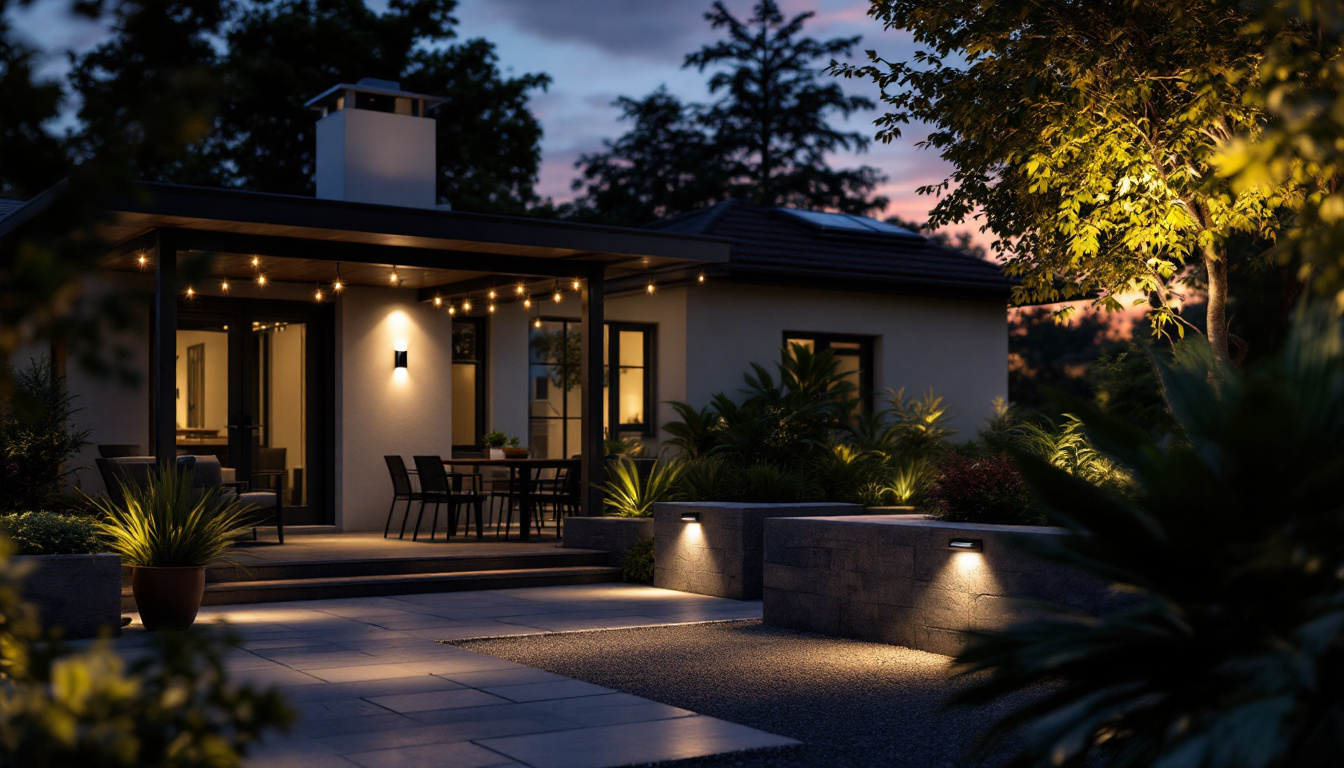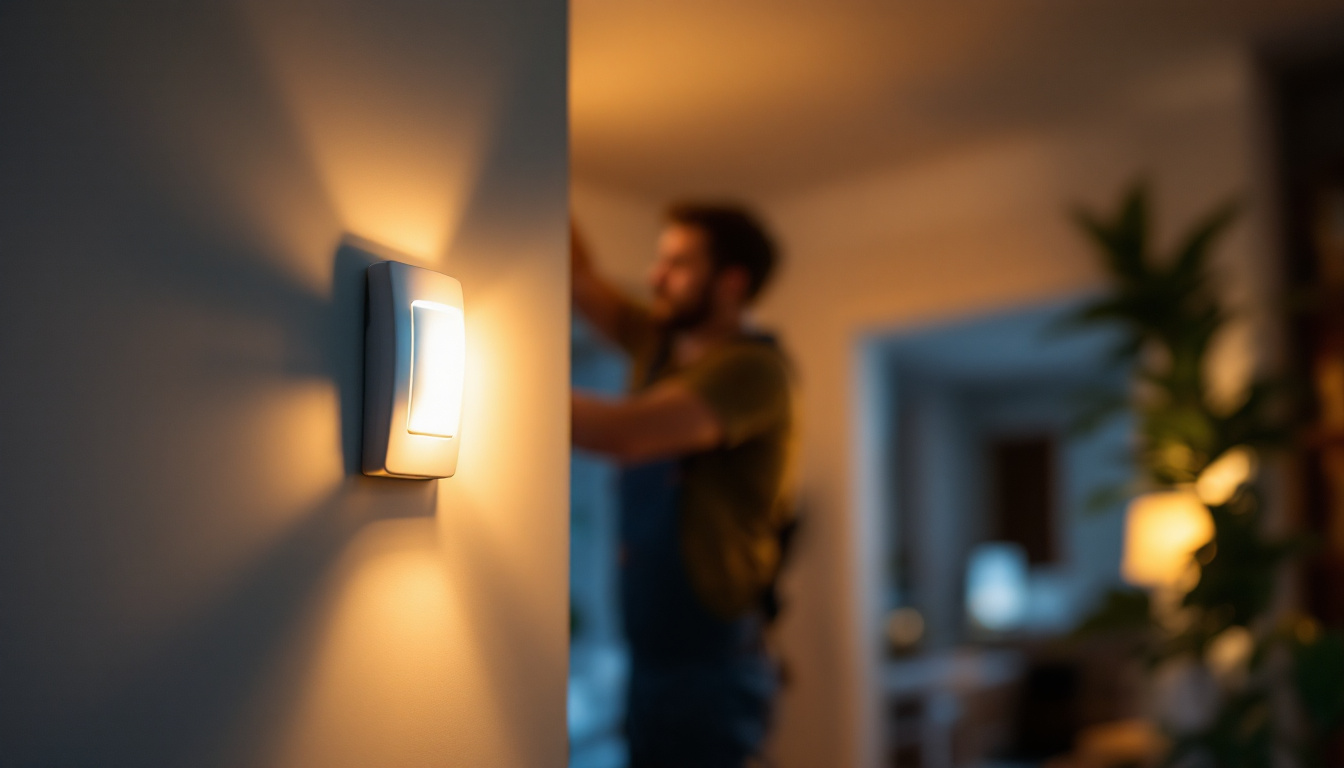

In recent years, solar flood lighting has emerged as a transformative force in the outdoor lighting industry. This innovative technology not only provides illumination but also offers a sustainable and cost-effective solution for various applications. As the demand for energy-efficient lighting solutions continues to rise, understanding the evolution of solar flood lighting becomes essential for lighting contractors and industry professionals.
solar technology has gained significant traction due to its environmental benefits and economic advantages. As energy costs soar and concerns about climate change grow, the shift towards renewable energy sources has become imperative. Solar flood lights harness the power of the sun, converting sunlight into electricity, which can be stored and used to power outdoor lighting systems. This innovative approach not only illuminates spaces but also represents a step towards a more sustainable future, where energy is harnessed from natural resources rather than depleting the earth’s reserves.
The environmental benefits of solar flood lighting are profound. By utilizing solar energy, these systems reduce reliance on fossil fuels, thus minimizing greenhouse gas emissions. This shift not only contributes to a healthier planet but also aligns with the growing consumer preference for sustainable products. Lighting contractors can play a crucial role in promoting these eco-friendly solutions, helping clients make informed decisions that reflect their values. Furthermore, solar flood lights often come equipped with energy-efficient LED technology, which not only enhances brightness but also extends the lifespan of the lighting fixtures, reducing waste over time. As urban areas continue to expand, the implementation of solar lighting can also help mitigate the urban heat island effect, contributing to cooler city environments.
In addition to environmental benefits, solar flood lighting offers significant cost savings. Traditional lighting systems often require extensive wiring and ongoing electricity costs, which can add up over time. In contrast, solar flood lights operate independently of the grid, eliminating electricity bills and reducing installation costs associated with wiring. For contractors, this means not only a more straightforward installation process but also an attractive selling point for clients looking to cut costs. Additionally, many regions offer incentives and rebates for solar installations, further enhancing the financial appeal. As technology continues to advance, the efficiency of solar panels is expected to improve, leading to even greater energy savings and making solar flood lights an increasingly viable option for both residential and commercial applications. This trend is not just about immediate savings; it represents a long-term investment in energy independence and sustainability that can yield substantial returns over the years.
As solar technology has evolved, so too have the features and capabilities of solar flood lights. Modern systems are equipped with advanced technologies that enhance their performance and usability, making them more appealing to both contractors and end-users.
One of the most significant advancements in solar flood lighting is the development of improved battery technology. High-capacity lithium-ion batteries now allow for longer operation times and faster charging. This means that solar flood lights can provide reliable illumination even during extended periods of cloudy weather or in regions with less sunlight. For contractors, this reliability translates into satisfied clients who can trust their lighting systems to perform consistently. Furthermore, the longevity of these batteries reduces the frequency of replacements, leading to lower maintenance costs and a smaller environmental footprint, which is an increasingly important consideration for many consumers.
Incorporating smart technology into solar flood lights is another trend that has gained momentum. Many modern systems now offer features such as motion sensors, remote control, and smartphone connectivity. These enhancements not only improve energy efficiency by ensuring lights are only on when needed but also provide users with greater control over their lighting environment. For contractors, recommending smart solar flood lights can set them apart in a competitive market. Additionally, the integration of smart technology allows for programmable settings, enabling users to customize their lighting schedules based on their specific needs, which can be particularly useful in commercial applications where security and energy savings are paramount.
Alongside these technological improvements, the durability and design of solar flood lights have also seen significant advancements. Manufacturers are now utilizing robust materials that can withstand harsh weather conditions, including heavy rain, snow, and extreme temperatures. This resilience not only extends the lifespan of the lights but also ensures that they maintain their aesthetic appeal over time. Moreover, sleek and modern designs are being developed to blend seamlessly into various architectural styles, making them suitable for residential, commercial, and public spaces alike. This focus on both functionality and design means that solar flood lights can enhance the visual appeal of properties while providing essential illumination.
As awareness of environmental issues continues to grow, the sustainability of solar flood lights has become a key selling point. These systems harness renewable energy from the sun, significantly reducing reliance on fossil fuels and lowering carbon footprints. Many manufacturers are also adopting eco-friendly practices in their production processes, such as using recyclable materials and minimizing waste. This commitment to sustainability resonates with consumers who are increasingly looking for green alternatives in their purchasing decisions. For contractors, promoting the environmental benefits of solar flood lights can not only attract eco-conscious clients but also contribute to a more sustainable future.
The versatility of solar flood lighting makes it suitable for a wide range of applications. From residential settings to commercial and industrial uses, these systems can be adapted to meet various lighting needs.
In residential areas, solar flood lights can enhance security and aesthetics. Homeowners are increasingly opting for solar solutions to illuminate pathways, driveways, and gardens. The absence of wiring makes installation straightforward, allowing homeowners to enjoy the benefits of outdoor lighting without the hassle of traditional setups. Lighting contractors can capitalize on this trend by offering tailored solutions that meet the specific needs of homeowners.
For commercial and industrial applications, solar flood lighting provides an efficient solution for illuminating large areas such as parking lots, construction sites, and outdoor event spaces. The ability to deploy these lights quickly and without extensive infrastructure makes them an attractive option for businesses looking to enhance safety and visibility. Contractors can position themselves as experts in solar flood lighting, helping businesses transition to more sustainable practices while improving their operational efficiency.
While the benefits of solar flood lighting are compelling, there are challenges that contractors must navigate when recommending these systems to clients. Understanding these challenges is crucial for ensuring successful installations and satisfied customers.
Although solar flood lights can lead to long-term savings, the initial investment may be higher than traditional lighting systems. This upfront cost can deter some clients, especially those unfamiliar with the technology. Lighting contractors should be prepared to educate clients on the long-term benefits and potential return on investment associated with solar flood lighting. Providing detailed cost analyses can help clients see the value in making the switch.
Proper site assessment is critical for the effective installation of solar flood lights. Factors such as sunlight exposure, landscape features, and potential obstructions must be considered to ensure optimal performance. Contractors need to conduct thorough evaluations and communicate the importance of these assessments to clients. This diligence not only enhances the effectiveness of the lighting system but also builds trust and credibility with clients.
The future of solar flood lighting appears bright, with ongoing advancements in technology and increasing acceptance among consumers and businesses alike. As the industry continues to evolve, several trends are likely to shape its trajectory.
As cities around the world strive to become smarter and more sustainable, the integration of solar flood lighting into urban infrastructure is likely to increase. Smart cities leverage technology to enhance the quality of life for residents, and solar flood lights can play a vital role in this transformation. Contractors who stay ahead of these trends will be well-positioned to meet the needs of urban planners and municipalities.
Future solar flood lighting systems are expected to offer even more customization options, allowing contractors to tailor solutions to specific aesthetic and functional requirements. From color temperature adjustments to sleek designs that blend seamlessly with architectural elements, the possibilities for customization are expanding. This trend not only enhances the visual appeal of outdoor spaces but also allows contractors to differentiate their offerings in a competitive market.
The evolution of solar flood lighting represents a significant shift in the outdoor lighting industry. With its environmental benefits, cost efficiency, and technological advancements, solar flood lighting is poised to become a staple in both residential and commercial applications. Lighting contractors who embrace this evolution and educate their clients about the advantages of solar solutions will be well-positioned for success in a rapidly changing market.
As the demand for sustainable and efficient lighting solutions continues to grow, the role of solar flood lighting will only become more prominent. By staying informed about the latest trends and advancements, contractors can ensure they are equipped to meet the needs of their clients and contribute to a more sustainable future.
Ready to harness the power of solar flood lighting and lead the charge towards a brighter, more sustainable future? At LumenWholesale, we provide lighting contractors with the highest quality, spec-grade solar flood lights at unbeatable wholesale prices. Our commitment to excellence ensures that you have access to the most reliable and high-performing lighting solutions for any project—big or small. Say goodbye to middleman markups and hello to hassle-free bulk buying with free shipping. Elevate your lighting game and give your clients the best value by choosing Wholesale Lighting at the Best Value with LumenWholesale.

Discover the essential resources lighting contractors rely on to master the art of light switch installation and design.

Discover how dimmable high bay lighting is transforming spaces with real-world success stories from lighting contractors.

Discover the transformative impact of movement sensor switches on the lighting industry.

Discover the pitfalls of purchasing architectural round pendant lights in bulk from local distributors.
Get notified when NEW deals are released.
Optimize your budget with wholesale discounts.
Only top-quality, specification-grade lighting products.
No additional costs at checkout - what you see is what you pay.
We understand the unique needs of contractors.